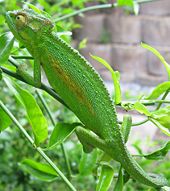General question
To determine the extent to which non-local factors influence the formation of secondary structural elements
Methodology
Design the longest possible sequence that can fold into an alpha-helix when inserted into one place in a protein sequence and a beta-sheet when inserted into another. Two key references are: on a Chameleon peptide[1] and an analysis of Helix-to-Strand Transition Between Peptides with Identical Sequences[2].
Seeing is believing
To simplify the figure, the entire IgG-Binding domain[3] is colored .
If residues are changed to the Chameleon sequence i.e. AWTVEKAFKTF, virtually no change in structure is seen.
Specifically the WT sequence in yellow (residues 23-33) is changed to Chameleon sequence shown in pink, , n.b. only 5 AA's have been changed in this region
WT: TTYKLILNGKTLKGETTTEAVDAATAEKVFKQYANDNGVDGEWTYDDATKTFTVTEK
Mutated: TTYKLILNGKTLKGETTTEAVDAWTVEKAFKTFANDNGVDGEWTYDDATKTFTVTEK
If a similar change from the Wild-Type to where 5 amino acids, in the region are changed to the Chameleon sequence, specifically from/to:
TTYKLILNGKTLKGETTTEAVDAATAEKVFKQYANDNGVDGEWTYDDATKTFTVTEK
TTYKLILNGKTLKGETTTEAVDAATAEKVFKQYANDNGVDGAWTVEKAFKTFTVTEK
3D structure of sequence adopts to environment
The 3D structure of the Chameleon sequence, AWTVEKAFKTF, appears to adopt to its environment.

